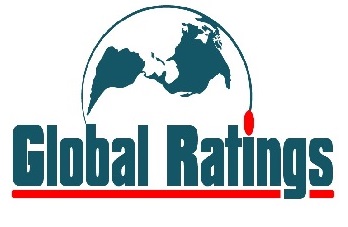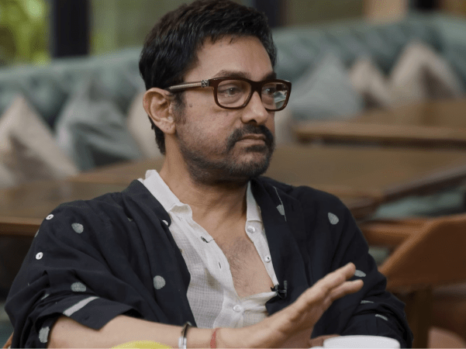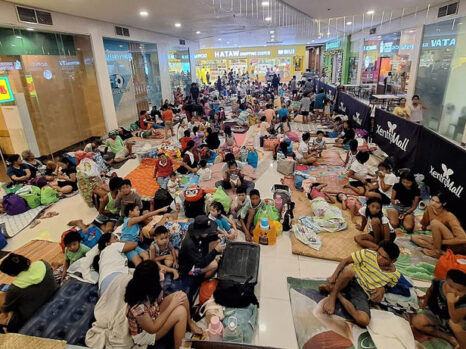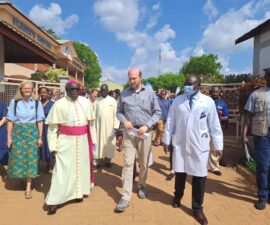As the holy month of Ramadan approached this year, fears grew that against the backdrop of the conflict in Gaza, Al-Aqsa Mosque in Jerusalem’s Old City could become the epicenter of tensions between Muslims and the Israeli authorities.
For Muslims, the mosque compound, home to Al-Aqsa and the golden Dome of the Rock, is the third-holiest site in Islam.
It holds equal significance for Jews, who know it as the Temple Mount. They believe it was the site of both the First Temple, destroyed by Babylon’s King Nebuchadnezzar II in 587 B.C., and the Second Temple, built in the first century B.C. and destroyed by the Romans in A.D. 70.
On March 11, when it appeared that Israeli police were taking action to limit Muslims’ access to Al-Aqsa during Ramadan, Jordan warned that the government was risking an “explosion.”
Speaking during a joint news conference with the Vatican’s foreign minister, Archbishop Paul Gallagher, Jordan’s Foreign Minister Ayman Safadi said: “Desecrating the sanctity of Al-Aqsa Mosque is playing with fire.
“Not allowing worshippers to perform their religious duties and their rituals in this holy month, and restricting freedom to enter the Aqsa Mosque, all that pushes towards an explosive situation.”
That same night, the first evening of Ramadan, disturbing footage emerged of baton-wielding Israeli police beating back Palestinians as they attempted to enter the compound to pray.
Barring the Crusader conquest of Jerusalem in the 12th century, the mosque compound has been under Islamic governance since the 7th century. Since 1948 it has been managed by the Jordanian-run Jerusalem Waqf and Al-Aqsa Mosque Affairs Department, but in recent years Israeli police have imposed increasingly strict restrictions on access to the site by Muslims.
During the British Mandate for Palestine, before the creation of the state of Israel in 1948, there were “no specific demands or requests from the pre-state Jewish community in regard to the Mount,” author Daniel Seidemann, an Israeli lawyer and founder of nongovernmental organization Terrestrial Jerusalem, wrote in a paper published last year by the Arab News Research and Studies Unit.
Even after the 1967 war, Israel did not claim sovereignty over the site. Now, however, “the ideological right in Israel view the failure to exercise untrammeled sovereignty over the Mount as the biggest blunder Israel has made since 1948, and a defiant rejection of God’s will.” Now, “they seek the reversal of this decision by fully and unapologetically exercising Israeli sovereignty over Al-Aqsa.”
The mosque compound has always been open for Jews to visit, under certain conditions. Ironically, said Seidemann, it was Israeli Prime Minister Benjamin Netanyahu who “best defined this core understanding in 2015 when he said: ‘Muslims pray at the Temple Mount; non-Muslims visit the Temple Mount.’”
Since then, however, extremist settler groups, protected by Israeli police, have made multiple sorties into the compound, encouraged by right-wingers in the Israeli Cabinet and provocative personal visits by Itamar Ben-Gvir, Israel’s minister of national security.
One such visit he made, in January 2023, was described by the Israeli newspaper Haaretz as “just one more irresponsible provocation.” According to Hamas, it was repeated provocations such as this that led to the group’s Oct. 7 attacks on Israel, which it codenamed “Operation Al-Aqsa Flood.”
But Israel’s ambitions for Al-Aqsa are only the surface manifestation of an even more sinister and far-reaching agenda, one that can lead only to further conflict and violence.
In this Deep Dive, Arab News exposes the extent to which the Israeli government, working through ministries that have handed control of spurious cultural projects to extremist settler groups, has set about slowly but steadily encircling the Old City of Jerusalem, with the ultimate aim of sabotaging any hope of a two-state solution.
On Wednesday, Oct. 9, 1991, Jamil Ahmed Abasi, a 45-year-old Palestinian, returned to his home in East Jerusalem to find that he and his family had been evicted and their house taken over in a raid by a group of armed Jewish settlers.
That day, no fewer than seven homes in Silwan, a Palestinian neighborhood south of the Old City of Jerusalem, were seized by religious extremists.
The group reportedly behind the seizures was a newly created settler organization called the City of David Foundation, better known today as Elad, which was determined to establish a Jewish presence on what its members believe to be the original site of Jerusalem.
“The Palestinians found out that they had lost their homes when their personal effects were being thrown out of windows by the settlers,” Seidemann told Arab News.
At the time, the events of October 1991 were unusual, so much so that they attracted headlines around the world, including in The New York Times. The newspaper reported the Abasi family’s despair – and the comments of Israel’s housing minister at the time, Ariel Sharon, who a decade later would become Israel’s 11th prime minister.
Asked if he supported the seizure of the Palestinian homes, Sharon replied: “Jews have a right to settle anywhere in the city.”
Today, that sentiment is shared by right-wing elements within Israel’s government which, in a stealthy initiative, have joined forces with Elad in an attempt to “Judaize” Jerusalem, in defiance of an international consensus that the only hope for long-term peace in the region lies in the creation of a Palestinian state alongside that of Israel.
On Jan. 21 this year, Netanyahu rejected a US call for such a two-state solution, earning a rebuke from Antonio Guterres, the secretary-general of the UN, that “denial of the right to statehood to the Palestinian people will indefinitely prolong a conflict that has become a major threat to global peace and security.”
On March 7, US President Joe Biden chose the platform provided by his annual State of the Union Address to raise the issue once again, earning enthusiastic applause from members of Congress when he reiterated his view that “the only real solution to the situation is a two-state solution.”
He added: “And I say this as a lifelong supporter of Israel … there is no other path that guarantees Israel’s security and democracy; guarantees Palestinians can live with peace and dignity; guarantees peace between Israel and all of its neighbors.”
But what is becoming increasingly clear is that the policies of the Netanyahu government are being driven as much by religious considerations as by political calculations.
With East Jerusalem envisaged as the capital of any future Palestinian state, Elad’s ultimate goal, Seidemann and other concerned observers believe, is to sabotage any hope of a two-state solution.
What no-one knew back in October 1991 was that the events in Silwan were just the beginning of a sinister initiative to encircle the Old City with a series of biblically inspired Jewish enclave settlements and associated cultural and tourism projects.
For 14 years, Terrestrial Jerusalem, an Israeli nongovernmental organization that monitors developments in the city that could affect the political process or spark conflict, has been tracking what appeared at first to be a random series of developments.
But now, Seidemann said, it has become clear that these projects are part of an orchestrated initiative by the Israeli government, operating mainly through the actions of extremist settler-group proxies, funded by both the government and wealthy foreign and domestic donors.
As an Israeli State Comptroller’s report noted in 2014, even at that time, a decade ago, the relationship between Elad and the Israel Nature and Parks Authority in the areas surrounding the Old City was so “symbiotic” that the two organizations were virtually indistinguishable.
In 2020, it was revealed that companies associated with the Russian oligarch Roman Abramovich, who became an Israeli citizen in 2018, had contributed more than $100 million to the settler group. In November 2022, it emerged that various government agencies, including the Jerusalem Affairs and Heritage Ministry and the Jerusalem Municipality, had given Elad a total of almost $8 million and, crucially, handed control of many public spaces to the group.
The money has funded several projects, including a rope bridge to be built over Palestinian homes in the Hinmon Valley and a biblically inspired “Farm in the Valley,” built on confiscated Palestinian land, “where you can feel with your hands the work of ancient farmers.”
The full extent of the plot identified by Terrestrial Jerusalem is spelled out in a recent report by the organization, titled “The Strategic Encirclement of Jerusalem’s Old City — The Emergence of a Settler-Controlled Biblical Realm.”
The danger this encirclement poses to the character of the city, and to any future peace process, said Seidemann, cannot be overstated.
“There are two kinds of settlements,” he explained. The first is the “large settlement neighborhoods that were built at various times alongside built-up Palestinian areas in East Jerusalem,” annexed by the Israelis after the 1967 war and subsumed into the municipality of Jerusalem.
“The second category of settlements are enclaves — individual houses, clusters of houses or small compounds — that have been implanted within Palestinian areas,” he said.
“These are discontiguous with Israel and, most importantly, they are ideologically driven, biblically driven.”
The settlers in these enclaves, Seidemann added, “see contemporary Israel as a continuation of the biblical Israel of the first and second temple periods, and they are settling in areas which, to their perception, resonate with biblical history.”
At first glance, the numbers of settlers in these enclaves appears too small to signify much; while more than 230,000 live in large settlement neighborhoods alongside Israeli territory, only about 4,000 live in the enclaves.
But what they, and their associated settler-led national parks and archaeological projects, represent is nothing less than “a radical transformation of the character of Jerusalem, at the core of Jerusalem,” said Seidemann.
“What we are seeing is the establishment of a very specific, exclusionary, absolutist biblical narrative in and around the Old City, and the etching of that narrative physically into the landscape through archaeology, parks, and so on.
“It is the marginalization of Palestinian East Jerusalem, politically, geographically and economically, and the marginalization of the Christian presence in Jerusalem.”
According to Jeff Halper, the Jerusalem-based head of the Israeli Committee Against House Demolitions, which was set up in 1997 “to be an actor in the political process of ending Israeli violations of international law,” there are two main motives for Israel’s systematic marginalization of Muslims and Christians.
“There is an economic aspect, he said. “For Israel, Jerusalem is a really important economic hub because of the tourism, and tourism would be the main industry for the Palestinians. So if you’re thinking about the two-state solution, by isolating Jerusalem from the rest of the West Bank, Israel basically cuts the economic heart out of any possible Palestinian state.
“But the real engine driving settlement in East Jerusalem is symbolism, connected to the religious and historic importance of Jerusalem, not only for Jews but of course for Muslims as well, and the key concept here is Judaization.
“From the very beginning, the whole purpose of Zionism was to Judaize Palestine, to make an Arab country into a Jewish country, and in Jerusalem this is even more intensified. The idea is to make Jerusalem a Jewish city and, as much as possible, remove the Christian and Muslim elements from it.”
The seizing of Palestinian homes in Silwan more than 30 years ago was just the start of this process. As Terrestrial Jerusalem continued to monitor developments in East Jerusalem, a clear pattern began to emerge.
“The surge we witnessed to the south of the Old City we also saw to the north in Sheikh Jarrah, a Palestinian area, where for the first time an entire community, with hundreds of families, came under threat of displacement, evoking memories of the Nakba,” said Seidemann.
This, accompanied by the establishment of a number of biblically themed national parks and other settlement-related projects, “which placed the public domain under the de facto authority of the settlers,” was the trigger for clashes between Israeli forces and Palestinian residents in Sheikh Jarrah in May 2021.
As settler enclaves began to appear like a rash around the Old City, Terrestrial Jerusalem’s observers watched as Elad and government organizations, including the Jerusalem Development Authority, the Israel Nature and Parks Authority and the Israel Antiquities Authority, began to collaborate in the creation of so-called “national parks” and Jewish-themed archaeological sites.
“In recent years, we have noticed an uptick in these enclave-settlement activities,” said Seidemann. Such projects “began to appear to us to be more than routine and we speculated that this was a government attempt, by means of the settlers, to create a pincer movement to encircle the Old City.
“We were seeing this, we were reporting it, but we could not assert it in an authoritative way. But that changed a year and a half ago.”
In early 2022, Seidemann was shown “a single government document which completed the picture.”
It was a statutory plan for the creation of a national park over the Christian holy sites on the Mount of Olives, a place of great significance to all three Abrahamic religions.
“At once, everything fell into place,” said Seidemann. “Never before had Israel aggressively imposed its authority and its symbols over the sacred sites of others.”
Both Muslim and Christian sites are under threat, he added.
“In East Jerusalem, it is well established that the Israel National Parks Authority is the long arm of the settlers. In effect, the sacred sites of Christianity would be under the thumb of settler organizations, which covet church property.
“And, just as the Temple Mount movements are attempting to transform Al-Aqsa from a Muslim place of worship, open to visits by non-Muslims, into a ‘shared’ Jewish-Muslim site, on the Mount of Olives they are seeking to transform the Christian holy sites into a Jewish-Christian site, where the Christian paths of pilgrimage are traversed with pseudo-biblical trails connecting settlement enclaves.”
This plan was exposed in detail by the Jerusalem Development Authority’s budget for 2022, which made provisions for, or referred to, no fewer than 26 developments to the north, east and south of the Old City.
In the south, these projects include the construction of the Kedem Compound, an Elad visitors’ center to be built just outside the walls of the Old City opposite the Dung, or Silwan, Gate. Extraordinarily, it is proposed to link this site with Mount Zion and beyond with a 1.4-kilometer cable car line which, held aloft by 15 massive supporting columns, will cut through the historic Palestinian neighborhood of Silwan. Houses along the route are slated to be demolished, and land belonging to various groups confiscated.
Residents of Silwan also face the prospect of watching tourists fly over their homes on a proposed, and already approved, zip-line ride that will run from a ridge overlooking the Old City into the “Peace Forest” built by Elad on land cleared of Palestinian homes.
To the east, Muslim and Christian sites on the Mount of Olives — but, notably, not the Jewish graveyard there — are threatened by the creation of another proposed national park. Two other parks under the de facto authority of the settlers are also proposed: Tsurim Valley and Mount Scopus Slopes.
Questionable archaeological projects are also playing a leading role in the Judaization of East Jerusalem, as Palestinian human-rights nongovernmental organization Al-Haq made clear in a 2022 report titled “Finding David: Unlawful Settlement Tourism in Jerusalem’s So-Called ‘City of David.’”
“The ‘City of David’ site and its archaeological remains,” it said, “are a useful tool to substantiate Israel’s purported claim of historical legitimacy over Jerusalem.”
In reality, Al-Haq concluded, the “City of David” is nothing more than “an illegal Israeli settlement and archaeological touristic site located in unlawfully annexed East Jerusalem.”
Silwan has a population of more than 40,000 Palestinians. The strategically inserted Elad enclaves are occupied by about 400 Jewish settlers.
A series of attractions have been established to attract Jewish tourists to the area, including what Elad describes as opportunities to “journey through the underground tunnels through which the city was conquered” and explore “the underground mysteries of Hezekiah’s Tunnel, where water has flowed since the time of the prophets.”
Palestinian residents, Al-Haq reports, can no longer freely access their now settler-occupied public spaces, including the rock-cut pools on the southern slope of Wadi Hilweh. Here, so the settlers believe, can be found the Siloam Pool which, according to the Hebrew Bible, was constructed in the 8th century B.C. during the reign of a king called Hezekiah.














